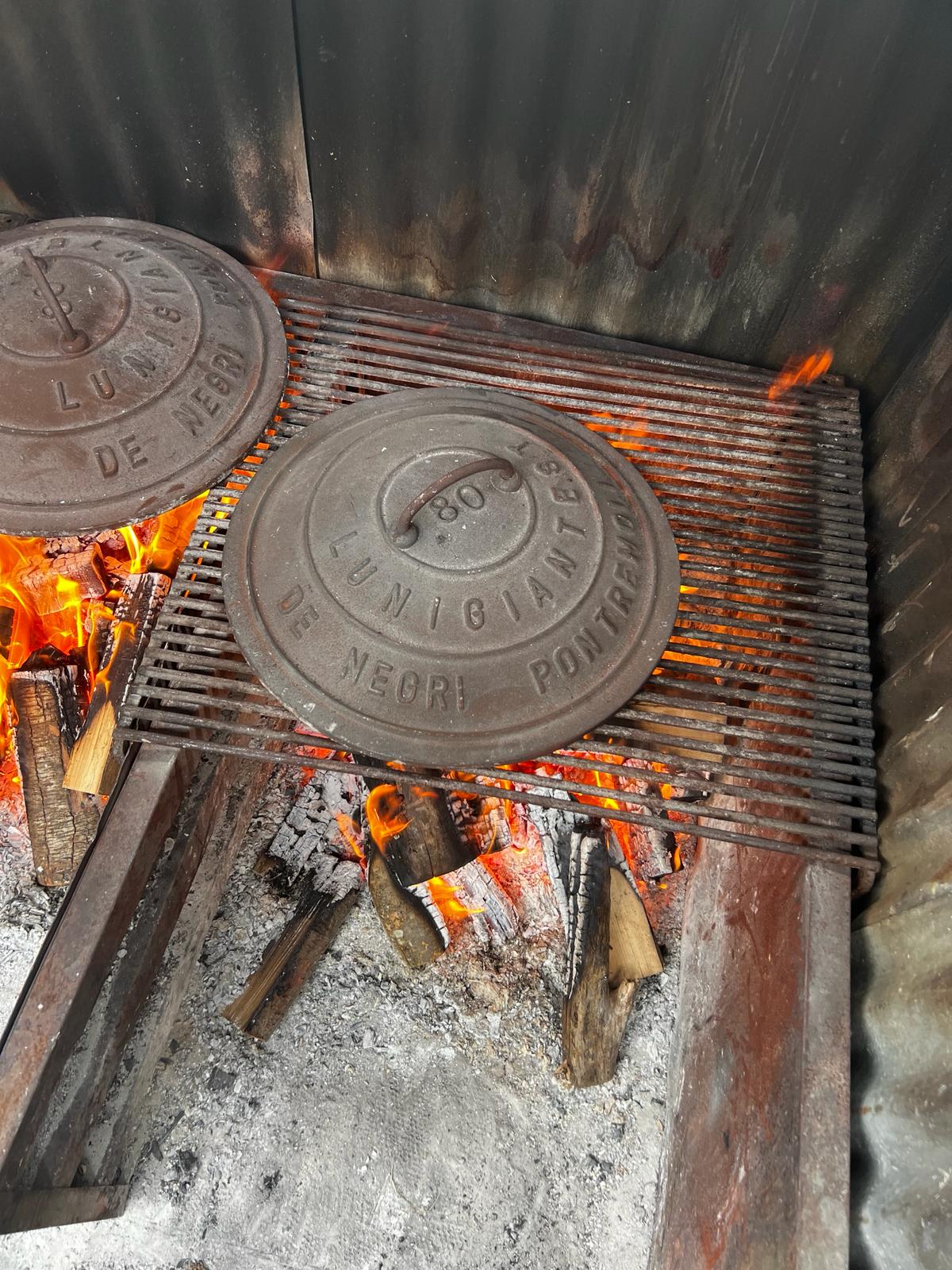Farina, Aqua, Sale - Flour, Water, Salt. It's simple, but there is a devil is in the details: How thick will you pour the batter? How hot is your griddle or the temperature of the water added to the mix?
Pasta is a staple in our house, so much so we often take it for granted. When we became residents of Pozzo, we learned a bit of the origin story of this every day go-to. We were so impressed by this dish and it's permutation, the Panagocchi, we had to try making them ourselves. After working out some technique, it is the obvious choice for a first recipe share. Roll up your sleeves and lets go back in time to when our noodles were pancakes!
The Testo
Testaroli dates back to Etruscan times and is tied to the region of Tuscany (eTruscan=Tuscan). To be most precise, this is a dish wholly from Lunigiana. Many Italians have never even eaten it nor are aware of it's place in food culture & the Old World! The cooking method can be freely interpreted and adapted to either modern day or rustic fire cooking. The technique used is quite plainly open to debate, variation and even argument. Testaroli: its like Adobo (Phillipines), Cheese Steaks that aren't from Philadephia or an old fashioned made with Whiskey vs Bourbon. It's provocative and who doesn't like to serve up a hearty discourse with a meal?
The Testo pictured to the right, is the style likely to have dated back to Medieval times. A precursor to this iron testo may have been more akin to what I know as a comal, only a lidded comal. The benefits of this griddle is in it's heat retention. By adding a lid, you can diversify from flatbreads into braising, cooking or roasting. This makes it as versatile a tool as other iconinc fire cooking vessels, like the Dutch oven or Moroccan Tangine.

The Recipe
Ingredients
Flour - equal parts, 250g yields enough for about 4-5, 12"/31cm testaroli
Water - equal parts, 250ml yields enough for about 4-5, 12"/31cm testaroli
Salt - large pinch, about 2g
Oil - enough to coat your testo or griddle, approx 1Tbl per testaroli
Method
Mix the flour and the salt in a bowl then add the water. The water needs to be warm to the touch, not hot nor too cold. The flour you use is important. Many recipes call for "00", we have used good quality flour with a high protein content.
|f using a testo, traditionally both the sottano (base or petticoat) and the soprano (lid) are heated over a wood fire. The internal parts of both base and lid will be in contact with open flame. In our region of Lunigiana hazel & chestnut wood can be used, although beech is another option. Most importantly is the sottano & soprano get red hot; ripping hot or scorching are other fine terms. Watch out for white hot, as it is not intended to be incendiary to point of combustion. If the piatto/base is too cool the bread will stick, too hot it will burn. When the petticoat has reached the right temperature, remove from the fire and the poured or laddle batter until the thickness is a good 3mm thick consistently throughout. It is then left to cook uncovered for a few moments, the bubbles will start to form & this is the moment to top with the soprano. If you are using a crepe or griddle pan, take it a bit futher until the edges start to develop a skin, before you flip the pancake to cook the other side.
Cut the testaroli into 2 inch diamonds and blanch in a pot of boiling water for 30 seconds, then drain. place back into the warm skillet and add ½ cup of fresh pesto (recipe below) Place into 4 bowls top with good quality olive oil and parmesan cheese. It is also famously paired with pesto. We will bring you a selection of our favourites in another recipe post!